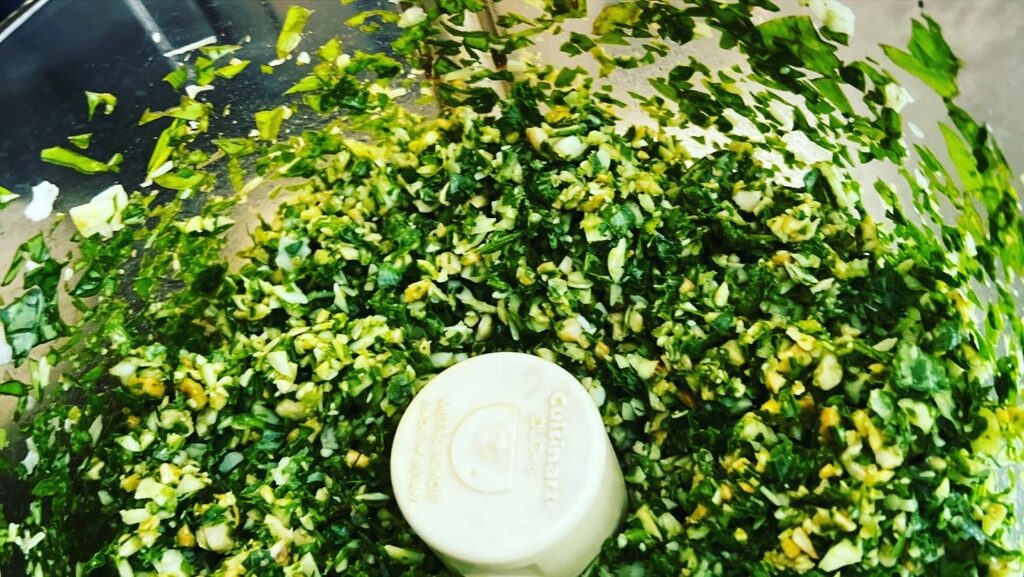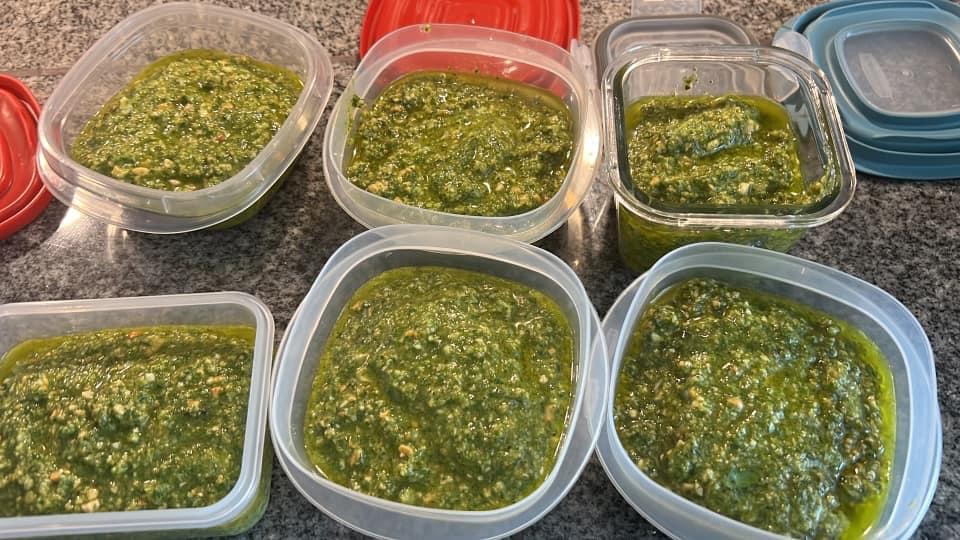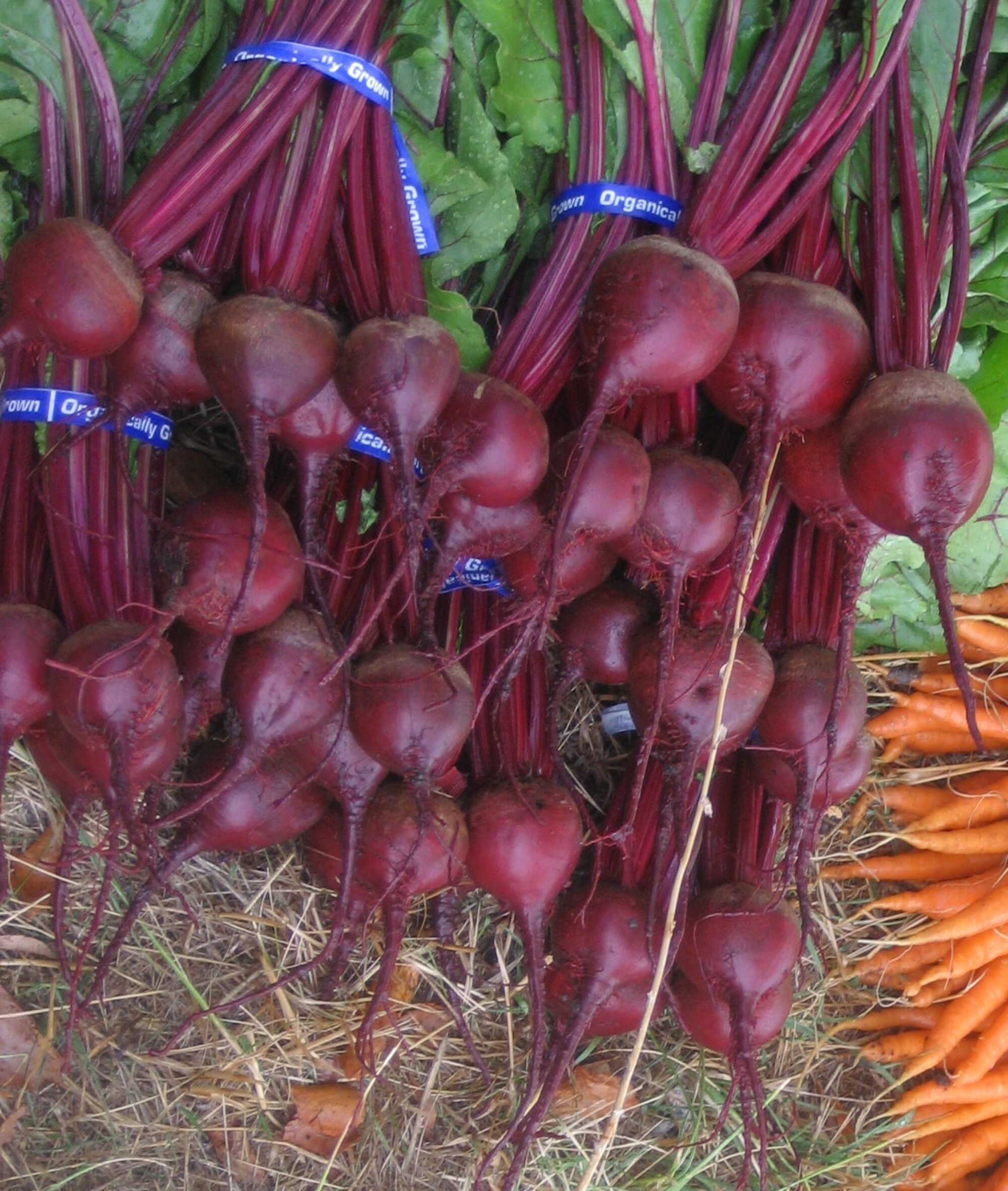Make pesto without a recipe as a form of self-care
I crave pesto in the summer when basil begins to show up at the market, and I can smell the tomatoes before I taste them.
I crave pesto in the winter when skies are dark and the air is crisp, and I need something to remind me that winter will not stay forever.
Pesto is hands down my favorite food, and I’ve never made it with a recipe. It’s a cathartic process, it brings up memories, it slows me down, it makes me feel, smell and taste. It does more than nourish my body, it nourishes my body mind and soul.
First, you need to understand that you don’t need a recipe for everything. You can throw things together and make up food as you go. You can create new flavors that wow you or leave you wondering what you did wrong. It is important to experiment and be confident. Give yourself the freedom to color out of the lines and go off script. We live in a world that is highly controlled. Bites are documented before we taste. Ingredients and recipes are overthought before we cook. Cooking without a recipe is self-care. It is freeing and creative and we need more of this.
Ditch the recipe and let your tastebuds guide you
Gather your ingredients. You need soft fresh herbs. Basil is traditional and the base of all my pesto. You can also consider spinach, parsley, cilantro, mint, tarragon or any other soft herb. Get creative and combine the herbs. I know this can be scary for some people, but seriously, you are making a sauce, what do you have to lose?
You will also need garlic, your choice of oil, nuts or seeds, salt, lemon or whatever citrus you like and cheese unless you want to make vegan pesto, then just omit the cheese.
I use my Cuisinart to make pesto, first I pulse my garlic and nuts/seeds until chunky. I have made pesto with macadamia, walnuts, pecans, pistachios, cashews, pumpkin seeds, sunflower seeds, peanuts, and filberts. No matter what nut or seed I use, it always turns out AWESOME! So, how much should you use? However much you like. I typically throw a couple of handfuls of nuts/seeds in and use anywhere from 3 -9 cloves of garlic. The point here is choose your own adventure.
Next, I add the basil and other herbs and cheese. For my cashew pesto batch I used spinach and basil combined. Just fill the food processor bowl up to the top and pulse a few times until it looks like this.

This is a good time to take your first taste and see if you have enough garlic, nuts, cheese. Adjust as needed.
Then I run the food processor and pour in oil until it starts to get loose. It will change from a solid to a liquid and that’s when I stop pouring in oil. Open the top and squeeze some citrus in. You can use lemons, limes, yuzu, grapefruit, anything tart will work. Tasting as you go will help you to determine what you like. I usually squeeze half a lemon in and then add good amount of salt. Pulse a couple of times.
At this stage I am tasting after every addition, so basically I am just eating pesto straight out of the bowl. I find that there is a magic point when you’ve added just the right amount of salt and all of the flavors merge and explode and at that point you stop and taste it one more time and find perfection.
Viola! You’re done! Now divide it all into freezer safe containers, top it off with a little more oil, date and label and put into your freezer. Remember to leave one in your refrigerator for dinner tonight, because…pesto is great for dinner!

Batch one, cashew pesto





 “The beet is the most intense of vegetables. The radish, admittedly, is more feverish, but the fire of the radish is a cold fire, the fire of discontent not of passion. Tomatoes are lustyenough, yet there runs through tomatoes an undercurrent of frivolity. Beets are deadly serious. Slavic peoples get their physical characteristics from potatoes, their smoldering inquietude from radishes, their seriousness from beets. The beet is the melancholy vegetable, the one most willing to suffer. You can’t squeeze blood out of a turnip…”
“The beet is the most intense of vegetables. The radish, admittedly, is more feverish, but the fire of the radish is a cold fire, the fire of discontent not of passion. Tomatoes are lustyenough, yet there runs through tomatoes an undercurrent of frivolity. Beets are deadly serious. Slavic peoples get their physical characteristics from potatoes, their smoldering inquietude from radishes, their seriousness from beets. The beet is the melancholy vegetable, the one most willing to suffer. You can’t squeeze blood out of a turnip…”